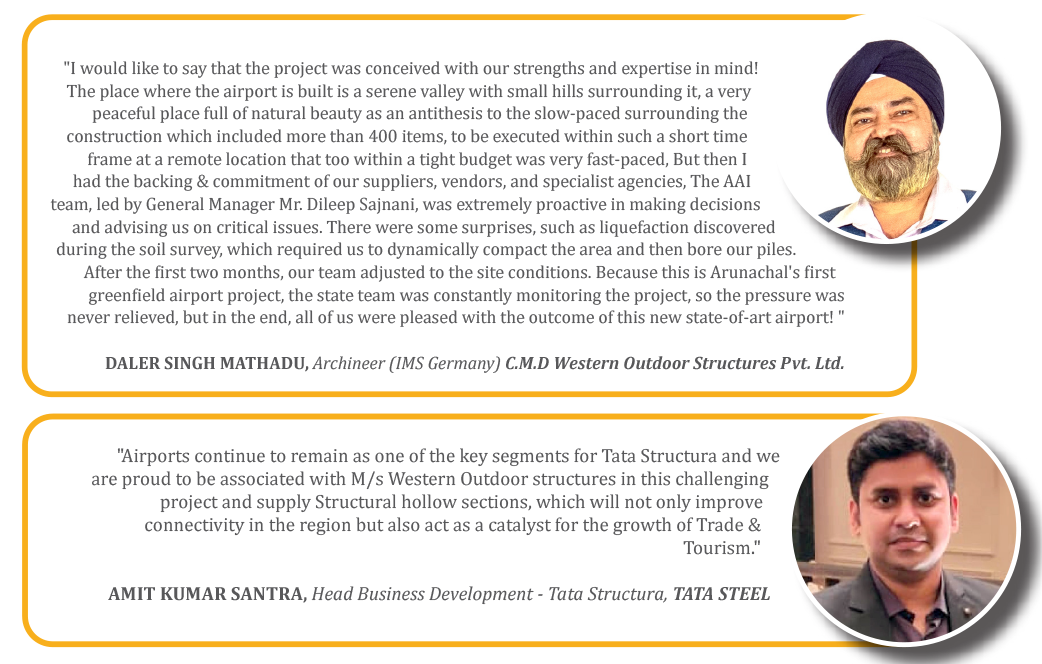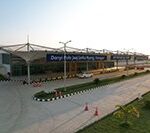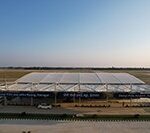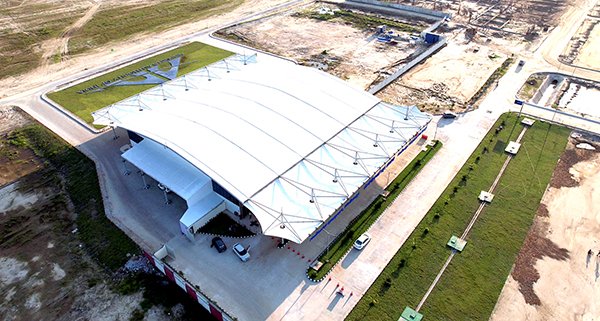
PROJECT BRIEF
The Itanagar Airport was a crucial project whose tender was floated by the Airports Authority of India. Once all the involved shareholders won their individual bids and came together to work on this project, the design, overall structure of the airport, etc., had to be done precisely and swiftly since this was a time-bound project. The out was to design and erect a structure that would not only serve the operational purpose of the airport while being aesthetically appealing but also would be easy to execute within the set 180 days time period.
STRUCTURAL & ARCHITECTURAL FEATURES
The Airport Terminal building consists of three structural elements, namely, the steel structure, the tension membrane fabric and the civil foundations. The Arched roof and the entrance canopies make this airport terminal building very unique and unlike any other structure in Arunachal Pradesh.
The primary frames were made of square, rectangular and circular hollow sections. The same method has been used for secondary items such as purlins and bracings and the portals consisted of rectangular hollow sections since the columns and circular hollow sections as arches. The entire structure is compact and the vault-shaped roof has a ridge height of 10 meters and an eave height of 6 meters.
CHALLENGES
The project timeline was 180 days, which meant that every aspect of the project had to be coordinated with the timeline. So, the first challenge was the timeline itself, and the second challenge was more challenging to overcome than the first. The distance between the site and the primary manufacturers was vast, and the remote location of the site added another challenge.
Since the nearest manufacturing unit of Tata Steel was in Jamshedpur, Jharkhand, it meant that any and everything that was being transported had to cross six states to reach Itanagar in Arunachal Pradesh. It would take a minimum of 15 days for transportation after loading in Jamshedpur.
Everything had to be planned in advance to the last-minute detail since sudden short-quantity purchases were not an option. Another challenge was the non-availability of local resources. Even the most commonly found machinery like cranes and other easily available equipment had to be procured from Guwahati, Assam, which was around 350 kms away from the site. Even the incidental project purchases had to be sourced from Guwahati.
CHOICE OF MATERIAL
The smooth finish and sleekness of hollow steel sections are much better than RCC columns and beams. So, the combination of form and choice of materials gives this project its uniqueness, which will definitely be replicated in other airport structures in the future.
For Columns, RHS and SHS has been used while for arches, purlins, tie member and canopy columns CHS has been used.
SOFTWARE USED
NDN (Nonlinear software for form finding), Stadd Pro and e-tab software have been used for chalking up the structural design of this airport terminal.


IN CONCLUSION
The structure is aesthetically pleasing, including the form of the building and the entrance canopies. The structure is lightweight while satisfying all the codal requirements. The smooth finish and sleekness of hollow steel sections are much better than RCC columns and beams. So, the combination of form and choice of materials gives this project its uniqueness, which will definitely be replicated in other airport structures in the future.





